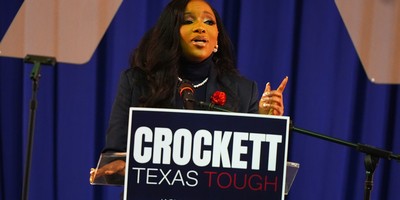We keep hearing that the economy is in a “jobless recovery.” What’s holding American companies back? Why aren’t they hiring more people?
High taxes draw a lot of attention, and rightly so. They depress investment and discourage innovation. But escalating regulatory costs also undermine our economy. And small businesses, which fuel so much economic growth and hire so many people, often wind up particularly hard hit by them.
You don’t have to be a doctrinaire conservative to realize this. The Economist, the London-based news weekly -- and a supporter of President Obama's candidacy in 2008 -- highlights the problem in its latest cover story, “Over-regulated America.” And they note the irony: "The home of laissez-faire is being suffocated by excessive and badly written regulation."
President Obama also has emphasized the problem. The “rules have gotten out of balance,” he said in a speech last year, resulting in “a chilling effect on growth and jobs.” When the National Federation of Independent Businesses asked small business owners in December to name their single biggest problem, 19 percent cited regulations and red tape -- up from 15 percent a year ago. That’s more than any other category except for “poor sales.”
The sheer number of regulations alone is staggering. Consider the size of the Federal Register, the daily official chronicle of regulatory changes. Before a new rule can take effect, it must be published in the Register. In 2009, it was 68,598 pages long. In 2010, it ballooned to 81,405. In 2011, the Register hit 82,415, a new record. And the president’s reassurances to the contrary, the number keeps going up.
Regulations add $10,585 in costs per employee, according to a study for the Small Business Administration. With a price tag like that, it’s no wonder hiring has taken a hit in the midst of a fragile recovery.
Recommended
Beyond the number and the total cost are the regulations themselves. Many are ludicrously nitpicky and easy to lampoon. “There are nine codes relating to injuries caused by parrots, and three relating to burns from flaming water-skis,” The Economist writes. The Heritage Foundation keeps a running tab of such rules on its “Tales of the Red Tape” weekly blog posts.
But while it’s entertaining to ridicule them -- and it’s certainly well-deserved -- we shouldn’t overlook the bigger rules. Take these three major new regulations from 2011:
1) March 21: New emissions standards are adopted for hundreds of thousands of commercial, institutional and industrial boilers. The price tag, according to a study by the economic forecasting firm IHS Global Insight? $20 billion. The rules would cause “significant new regulatory costs” for businesses, institutions and municipalities nationwide, the Small Business Administration warned. A Commerce Department analysis reportedly found they would result in 40,000 to 60,000 lost jobs.
2) Aug. 8: A new rule forces 27 eastern, mid-western, and southern states to achieve more stringent emissions reductions from power plants. Texas and 26 other states have challenged it, calling it a threat to the reliability of the electrical supply. Annual cost: $846.33 million. Don’t expect this one to reduce unemployment either.
3) Sept. 15: New fuel efficiency and, yes, emissions standards go into effect for combination tractors, heavy-duty pickups and vans, and vocational vehicles. The rule is expected to drive up prices for trucks by up to $6,000. And who does the added burden fall most heavily on? Small, independent owner-operators of trucks. Annual cost: $606.9 million.
Many of these regulations, not surprisingly, are created not by politicians but by bureaucrats who are unaccountable to voters. Which points to one obvious solution: We need to require congressional approval of major new rules. A new congressional office to analyze proposed regulations and their likely effect would also help, as well as a “sunset,” or expiration date. That would help clear outdated rules off the books.
The stakes are high. “Regulation may crush the life out of America’s economy,” The Economist concludes. Is Congress going to stand by and let that happen?

























Join the conversation as a VIP Member